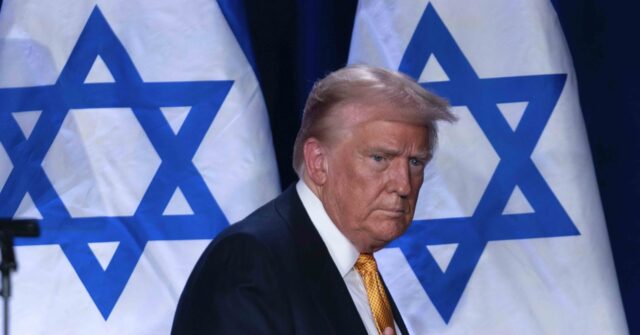Trump’s Shift on the Israeli-Palestinian Peace Process
In a recent interview with Time magazine, President-elect Donald Trump expressed a marked shift in his approach to the Israeli-Palestinian conflict, indicating that he no longer supports the two-state solution as the sole path to peace. Instead, Trump emphasized the need for exploring alternative solutions to achieve a lasting peace, recognizing the complexities of the ongoing tensions. He reflected on his experience during his first term, highlighting the Abraham Accords as a significant diplomatic achievement that he believes could have included more Middle Eastern nations. His comments signal a departure from traditional diplomatic approaches, suggesting a more flexible framework that prioritizes peace above specific political solutions, such as the establishment of a Palestinian state.
Trump’s reflections on the peace process reflect a broader recognition of changing sentiments among Israelis. Polls reveal that public opinion among Israelis has shifted dramatically over the past decade, with overwhelming opposition to the creation of a Palestinian state, particularly following the October 7 attacks orchestrated by Hamas from Gaza. This shift in Israeli attitudes poses a challenge to the conventional diplomatic narrative dominated by the two-state solution as the only viable outcome. Trump’s desire for a deal that leads to peace and an end to violence indicates a pragmatic approach that may resonate with the current Israeli public sentiment, diverging from the strategies of previous administrations that championed the two-state framework.
Amid this evolving landscape, the Biden-Harris administration has remained committed to the two-state solution, pursuing it steadfastly even at the cost of delaying significant peace agreements in the region, such as the proposed Saudi-Israel deal. This approach has been criticized for effectively giving the Palestinians a veto over broader regional peace initiatives, raising questions about the viability and efficacy of the two-state narrative in achieving lasting stability in the Middle East. Trump’s willingness to consider alternative solutions could potentially open new avenues for diplomacy, but it also raises concerns about how this approach will be received by a Palestinian leadership disillusioned by past negotiations and current geopolitical dynamics.
Central to Trump’s new stance is the appointment of Mike Huckabee as his ambassador to Israel, who is known for his strong support of the Israeli settlement movement and the annexation of the West Bank. This development has ramifications for the peace process, as Huckabee’s pro-settlement views align with Trump’s desire to prioritize Israeli security. Trump’s assertion that his ultimate goal is a deal that ensures peace and stops violence challenges the previous focus on specific territorial arrangements. The integration of figures like Huckabee into Trump’s administration suggests a pivot towards policies that may prioritize Israeli interests more directly, potentially alienating Palestinian aspirations and complicating negotiations.
The nuanced position expressed by Trump signifies a broader, more contentious discourse surrounding American foreign policy in the Middle East. While traditional frameworks endorsing the two-state solution continue to find support among diplomats and certain political factions, the dramatic shifts in regional dynamics and public opinion may necessitate a reevaluation of such strategies. Trump’s emphasis on practicality and the need for coherent peace initiatives could catalyze a more comprehensive understanding of what lasting peace entails, although it also poses risks of deepening tensions with Palestinian leaders who may view these changes as further marginalization of their political rights.
Ultimately, the evolving dialogue surrounding the Israeli-Palestinian peace process under Trump’s leadership represents a significant moment in American diplomacy. By advocating for flexibility in solutions and prioritizing peace, Trump may shift the discourse towards pragmatism. However, the implications of such a pivot must be considered within the context of long-standing conflicts, historical grievances, and the complexities of Middle Eastern geopolitics. As the global community anticipates the new administration’s approach, the challenge will be balancing the aspiration for peace with the realities of entrenched positions on both sides of the Israeli-Palestinian divide.

